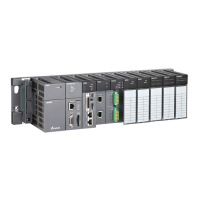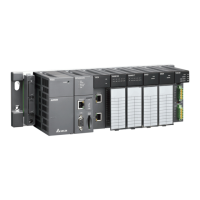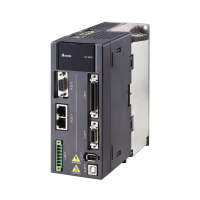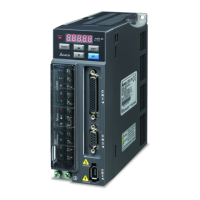Chapter 6 Applied Instructions
6-77
API
Instruction code
Operand Function
0202 D FLT P
S, D
Converting the binary integer into
the binary floating-point number
Device
X Y M S T C HC D L SM SR E PR K 16# “$” DF
Pulse instruction 16-bit instruction (5 steps) 32-bit instruction (5 steps)
Symbol:
S
:
Source device Word/Double word
D
:
Conversion result Double word
Explanation:
1. The instruction is used to convert the binary integer into the single-precision floating-point
number.
2. The operand S used in the instruction FLT can not be the 32-bit counter.
3. The source device S used in the instruction FLT occupies one register, and D used in FLT
occupies two registers.
4. The source device S used in the instruction DFLT occupies two registers, and D used in DFLT
also occupies two registers.
When the absolute value of the conversion result is larger than the value which can be
represented by the maximum floating-point number, SM602 is ON, and the maximum
floating-point number is stored in D.
When the absolute value of the conversion result is less than the value which can be
represented by the minimum floating-point number, SM601 is ON, and the minimum
floating-point number is stored in D.
When the conversion result is zero, SM600 is ON.
Example 1:
1. When X0.0 is ON, the binary integer in D0 is converted into the single-precision floating-point
number, and the conversion result is stored in (D13, D12).
2. When X0.1 is ON, the binary integer in (D1, D0) is converted into the single-precision
floating-point number, and the conversion result is stored in (D21, D20).
3. Suppose the value in D0 is 10. When X0.0 is ON, 10 is converted into the single-precision
floating-point number 16#41200000, and 16#41200000 is stored in the 32-bit register (D13,
D12).
4. Suppose the value in the 32-bit register (D1, D0) is 100,000. When X0.1 is ON, 100,000 is
converted into the single-precision floating-point number 16#47C35000, 16#47C35000 is
stored in the 32-bit register (D21, D20).

